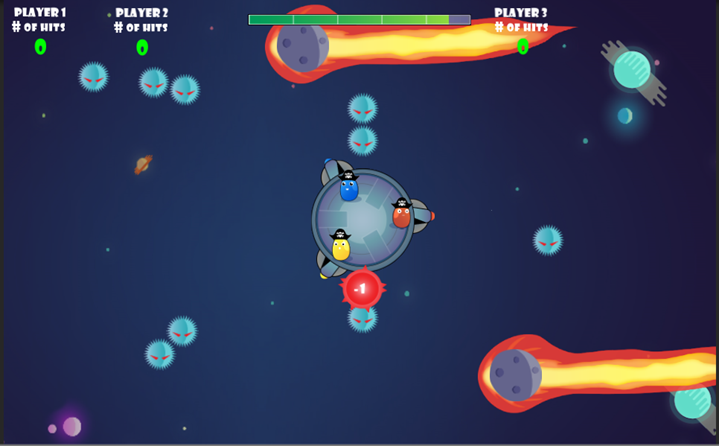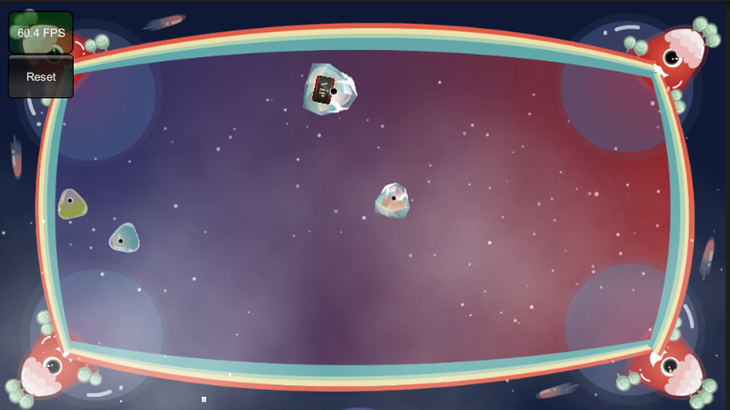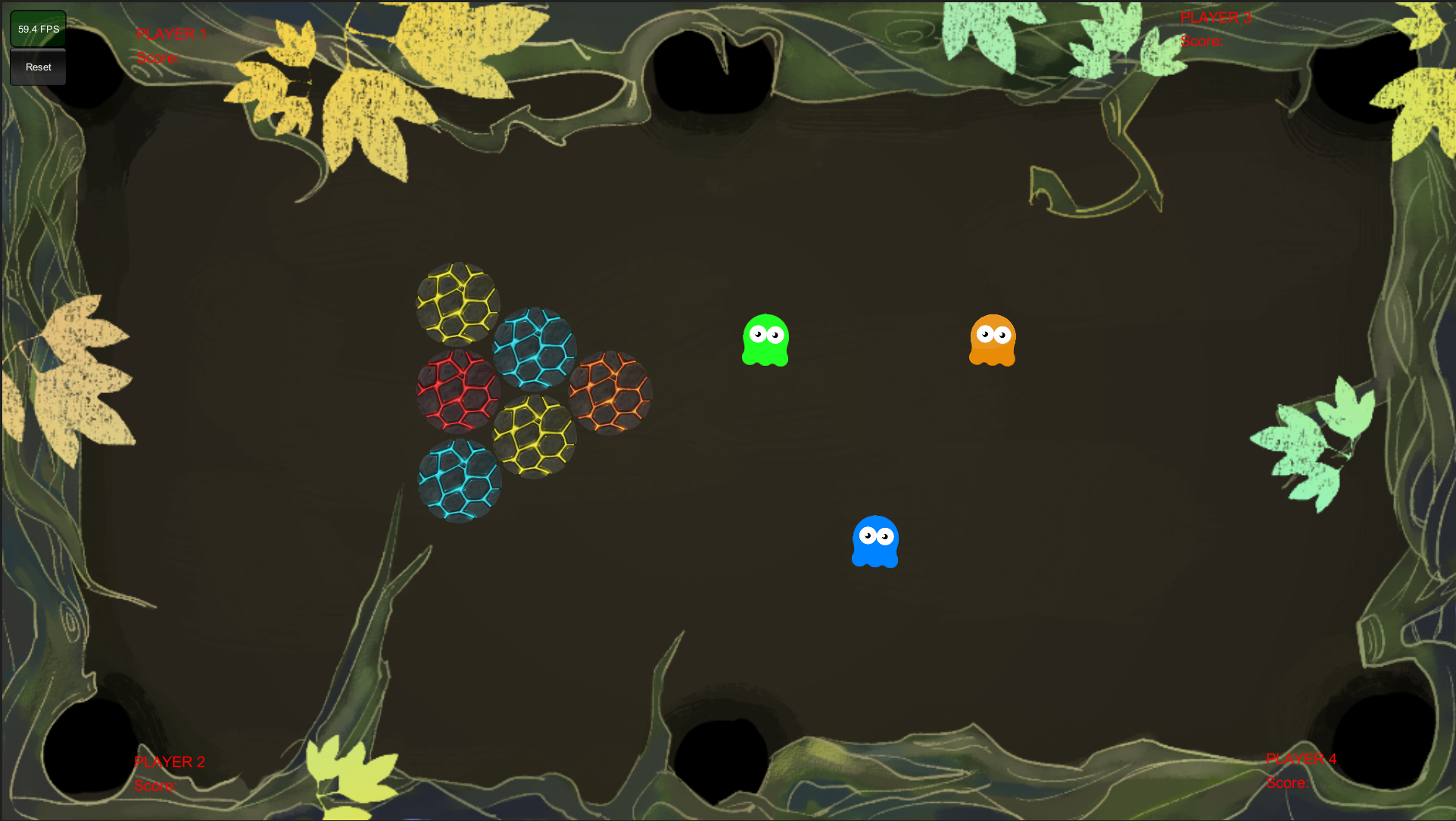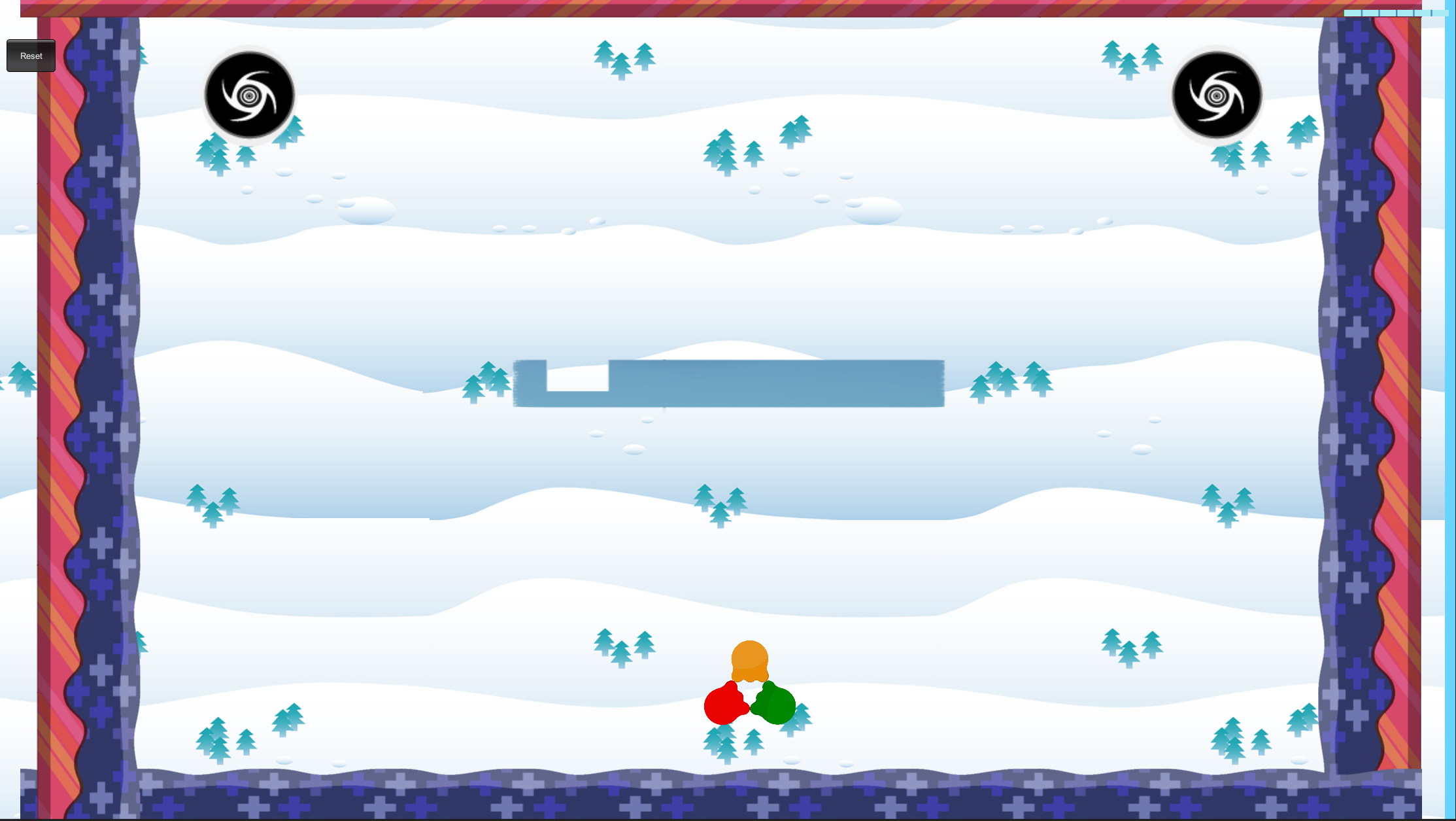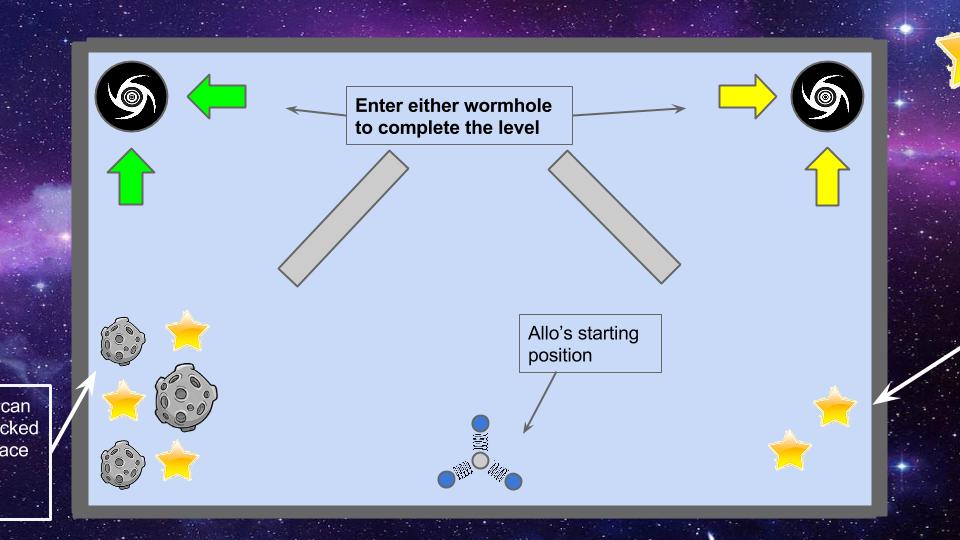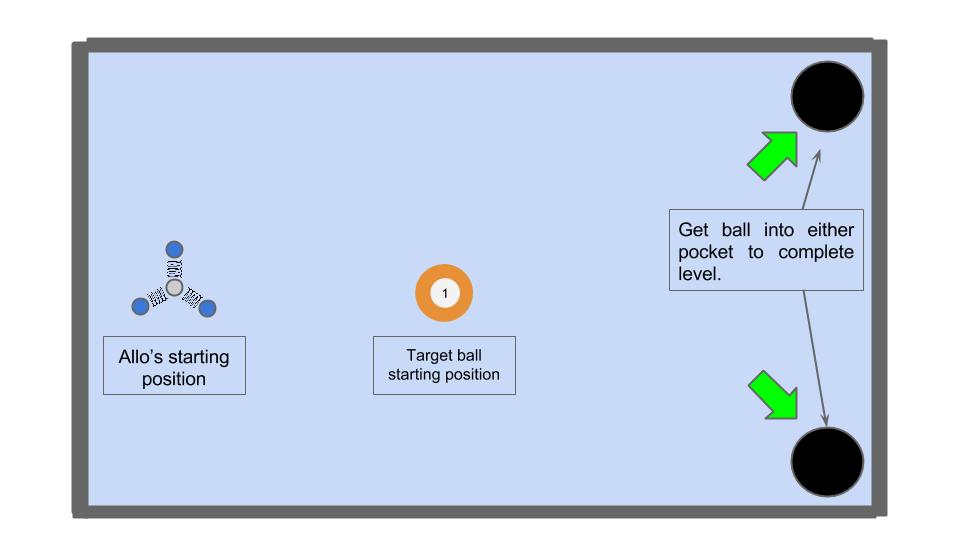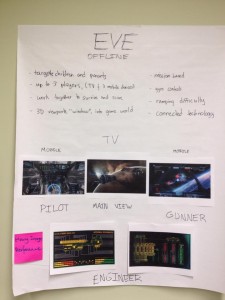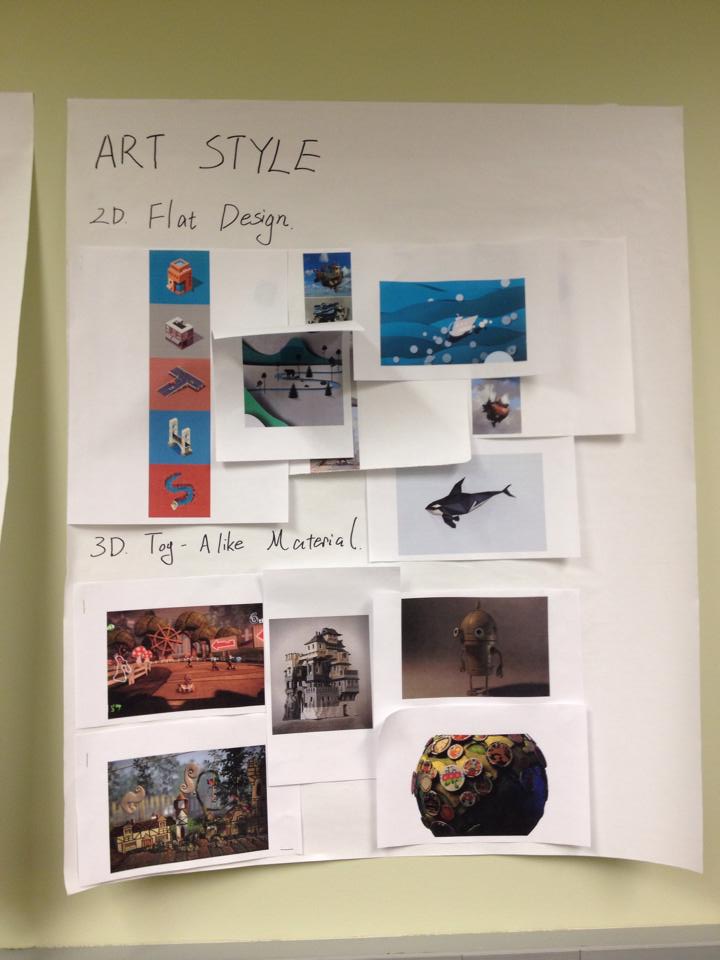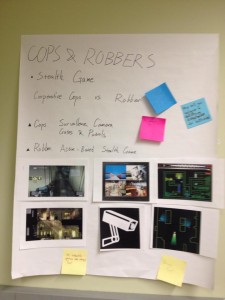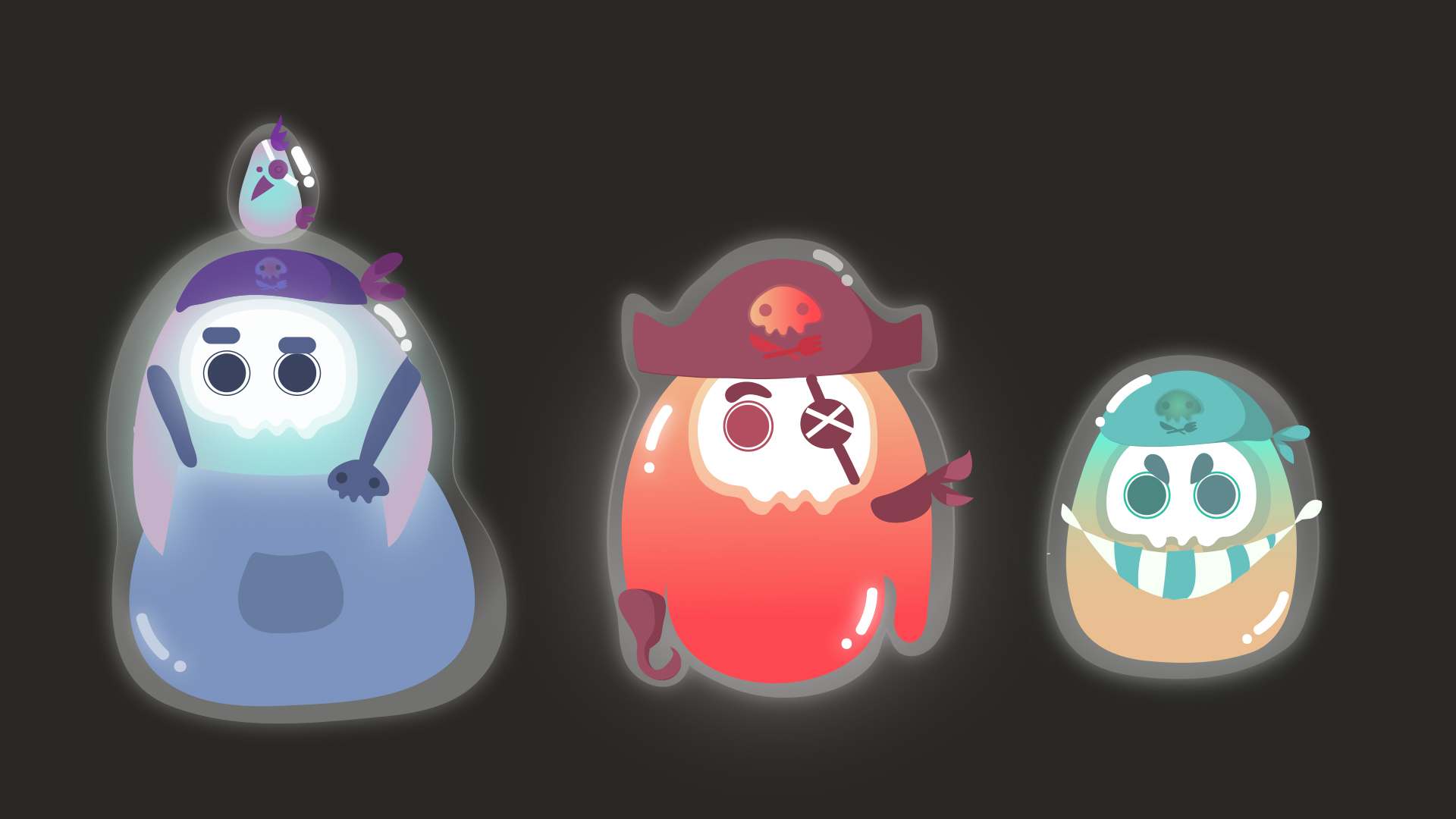
So far we have been working to design the roles of captain, navigator of the ship, and crew, players who man the cannons of the ship. We have iterated on mechanics that allow the captain to move the ship up and down, as well as crew mates to move their cannons around the ship in order to aim. We are anticipating our second playtest and wish to lock down these two roles in order to consider a third role to provide more variety and selection for the players.
Our designers came up with a third interaction scheme for the game based on feedback we received from clients and faculty. The captain can move the ship up and down onscreen, as well as rotate a barrier that can protect parts of the ship from enemy impacts. The gunners are able to rotate the cannons around the ship’s entire 360-degree range (though they cannot occupy the same space/overlap). We wanted to try a version with these mechanics in order to give the shooters more independence from the navigator, as well as to give the navigator a more clear and meaningful interaction.
